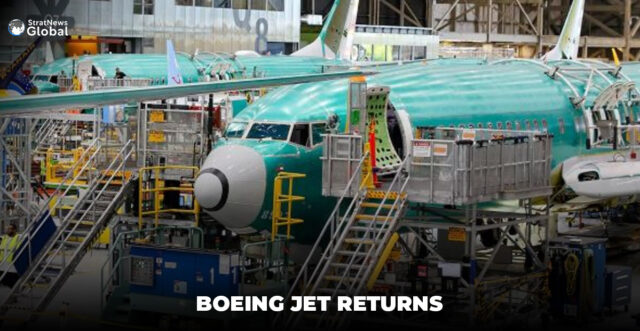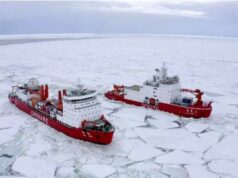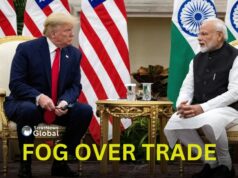Flight tracking data on Monday showed a second Boeing jet, originally meant for a Chinese airline, returning to the United States. The move appears to be linked with the tit-for-tat tariffs between the U.S. and China, part of President Donald Trump’s global trade campaign.
The 737 MAX 8 landed in the U.S. territory of Guam on Monday, after leaving Boeing’s Zhoushan completion center near Shanghai, data from flight tracking website AirNav Radar showed.
Guam is one of the stops such flights make on the 5,000-mile (8,000-km) journey across the Pacific between Boeing’s U.S. production hub in Seattle and the Zhoushan completion center, where planes are ferried by Boeing for final work and delivery to a Chinese carrier.
On Sunday a 737 MAX painted with the livery for China’s Xiamen Airlines made the return journey from Zhoushan and landed at Seattle’s Boeing Field.
It is not clear which party made the decision for the two aircraft to return to the U.S.
Boeing could find a replacement buyer in Malaysia Airlines, however, which has said it was talking to the manufacturer about acquiring jets that may become available should Chinese airlines stop taking deliveries.
Trump this month raised baseline tariffs on Chinese imports to 145%. In retaliation, China has imposed a 125% tariff on U.S. goods. A Chinese airline taking delivery of a Boeing jet could be crippled by the tariffs, given that a new 737 MAX has a market value of around $55 million, according to IBA, an aviation consultancy.
The plane flew from Seattle to Zhoushan just under a month ago.
Boeing did not immediately respond to a request for comment.
The return of the 737 MAX jets, Boeing’s best-selling model, is the latest sign of disruption to new aircraft deliveries from a breakdown in the aerospace industry’s decades-old duty-free status.
The tariff war and apparent U-turn over deliveries comes as Boeing has been recovering from an almost five-year import freeze on 737 MAX jets and a previous round of trade tensions.
Confusion over changing tariffs could leave many aircraft deliveries in limbo, with some airline CEOs saying they would defer delivery of planes rather than pay duties, analysts say.
(With inputs from Reuters)





